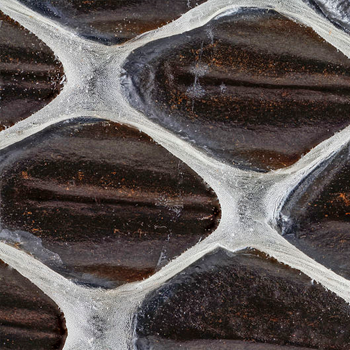Standing Waves Question?
1 Answer
Explanation:
Step 1
Since the speed of sound increases as the air temperature increases, we must first determine the speed of the sound waves produced by the clarinets at a temperature of
#color(blue)(|bar(ul(color(white)(a/a)color(black)(v_s=331m/s+((0.6m/s)/(color(white)(i)^@C))xx"temperature")color(white)(a/a)|)))#
Plugging in the values, the speed of the sound waves at
#color(darkorange)(v_s)=331m/s+((0.6m/s)/(color(white)(i)^@C))xx21^@C#
#=color(darkorange)(343.6m/s)#
Step 2
If you think about a clarinet, it is open at one end only, the bell, or the bottom of the instrument. The top of the clarinet where the mouthpiece is located, is covered by the mouth while the instrument is being played. Hence, the top is said to be closed.
Knowing that the clarinet is an air column open at one end, we can determine the frequency of the sound waves produced.
The formula for the frequency of sound waves in an air column open at one end is:
#color(blue)(|bar(ul(color(white)(a/a)color(black)(f=((2n-1)v)/(4L))color(white)(a/a)|)))#
#ul("where:")#
#f=# frequency
#n=# harmonic number
#v=# velocity of sound waves
#L=# length of air column
However, in this case, since the two clarinets are played at their fundamental frequency, meaning that the harmonic number is 1, the equation simplifies to
#f=v/(4L)#
With the formula, the frequencies of each clarinet according to their appropriate lengths are:
#color(purple)(f_1)=color(darkorange)(v_s)/(4L_1)color(white)(XXXXXXXXX)color(teal)(f_2)=color(darkorange)(v_s)/(4L_2)#
#=(color(darkorange)(343.6m/s))/(4(1.20m))color(white)(XXXXXXXxx)=color(darkorange)(343.6m/s)/(4(1.22m))#
#=color(purple)(71.58Hz)color(white)(XXXXXXXXxx)=color(teal)(70.41Hz)#
Step 3
Knowing the frequencies of the two clarinets, we can determine the beat frequency with the beat frequency formula:
#color(blue)(|bar(ul(color(white)(a/a)color(black)(f_b=|f_1-f_2|)color(white)(a/a)|)))#
Note that since this formula has an absolute value sign, there are two cases.
#ul("Case"color(white)(i)1)#
#f_b=color(purple)(f_1)-color(teal)(f_2)#
#=color(purple)(71.58Hz)-color(teal)(70.41Hz)#
#=1.17Hz#
#~~color(green)(|bar(ul(color(white)(a/a)color(black)(1.2Hz)color(white)(a/a)|)))#
#ul("Case"color(white)(i)2)#
#f_b=-(color(purple)(f_1)-color(teal)(f_2))#
#=-(color(purple)(71.58Hz)-color(teal)(70.41Hz))#
#=color(red)cancelcolor(black)(-1.17Hz)#
However, case

